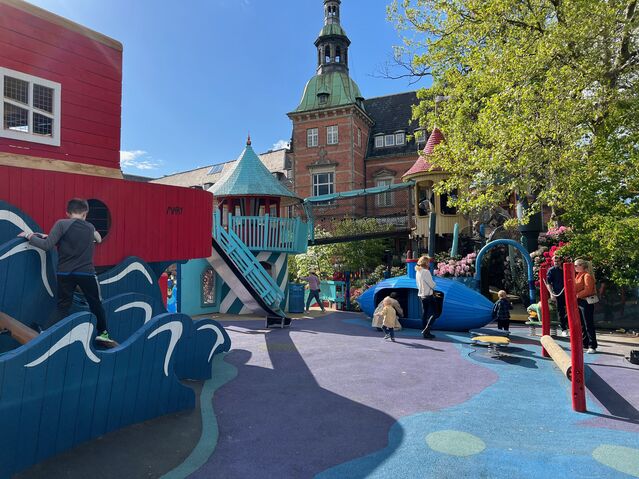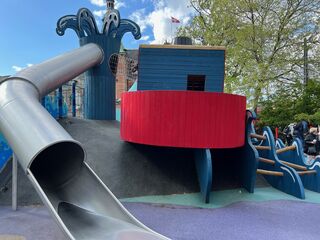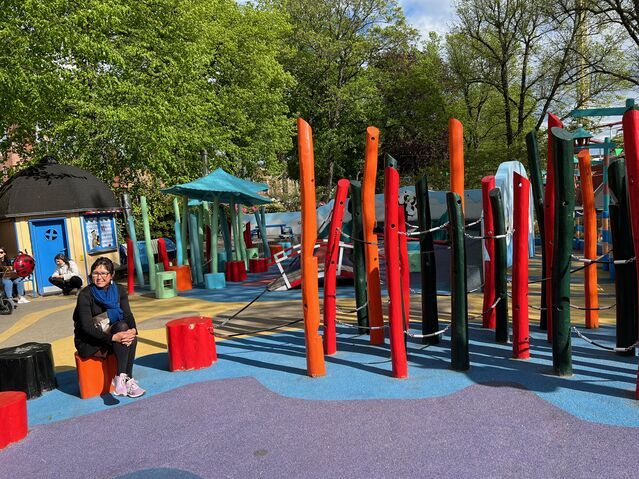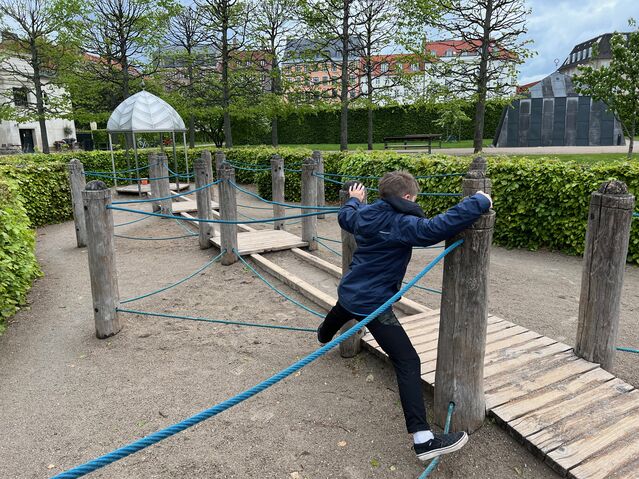Play
Copenhagen: A Family-Friendly City That Highly Values Play
The Danish capital city strongly supports and provides abundant access to play.
Posted July 7, 2022 Reviewed by Vanessa Lancaster
Key points
- Copenhagen requires that all of its citizens can access a beach or park on foot within 15 minutes.
- Cultural support for play and easy access to parks result in multiple opportunities for Danish children to play, even in the middle of the city.
- Innovatively designed playgrounds throughout the city encourage creativity and imagination in children of all ages.
I have long known that Scandinavian countries provide great support for families. Out of 80 countries, Denmark was ranked #1 as the best country for raising kids, Sweden was ranked #2, Norway was ranked #3, and Finland was ranked #6. (The U.S., unfortunately, was not among the top 10).
What makes these countries so great for raising families? For one, in each country, parents are granted almost a year of fully (or close to fully) paid leave after their children are born. In several Scandinavian countries, jobs are still guaranteed for parents (even if they are not paid) for an additional year or two beyond that. People with strollers travel free on buses in most major Scandinavian cities.
In Finland, a maternity package (called “the baby box”) consisting of 40-60 items for new moms and babies is delivered to all new mothers. Child care is universal and essentially free (or highly subsidized) in most Scandinavian countries up until age five to seven.
After that, childcare before and after school is subsidized. Child care in these countries costs parents between about $100 and $175 a month at most. University education is free for nationals and many international students in all Scandinavian countries.
When the opportunity arose for me to travel to Sweden with a class of college students I was teaching this past spring, I jumped at the opportunity to go. Fortunately, I could also bring my family along to this family-friendly area of the world. We also decided to tack on a trip to Denmark while we were so close since my husband’s family is originally from this country.
In addition to doing some traditional tourist activities in Denmark and Sweden, I visited both countries with an eye toward the child-friendly attractions in the city since my course was about play and since my research and teaching interests include play and imagination.
I have already written a few posts about some of the play we observed in Sweden–one on the forest school that hosted us while we were there and one on some of the truly amazing playgrounds we visited in Stockholm. For this post, I will focus on what I got to see while in Copenhagen.
In Copenhagen, there is an official municipal policy stating that all citizens must be able to reach a park or beach on foot in less than 15 minutes. Thus, there is an abundance of open, green public spaces and places for families to visit, relax, explore, and play.
Copenhagen also has over 125 public playgrounds. The playgrounds do not, for the most part, look like traditional American stand-alone units with slides, monkey bars, and swings.


Tivoli Gardens was one of the coolest playgrounds I personally visited with my family while we were there. Known as the Rasmus Klump playground, this unexpected gem within the theme park would have kept my 9-year-old son content for the entire day, even if he did not have a theme park full of rides to explore.
Even my 11-year-old daughter was convinced to join her brother in play and got absorbed in running, climbing, sliding, hiding, and exploring (even if she doesn’t want to admit that she can still have fun on a playground!).
The playground features a nautical theme with a whale as the centerpiece. There are boats, lighthouses, lookout towers, bridges, tunnels, poles, stumps, and climbing walls scattered throughout. While the structures themselves may be fixed, the theme is creative, and imagination will definitely be sparked in kids of all ages who visit this playground.
Additionally, motor skills of all kinds will be stimulated as children run, climb, slide, crawl, and figure out how to navigate small, narrow, high, and low spaces. The colors are bright, and the space is inviting for children–and adults–of all ages.


Another fun play space we visited was the King’s Garden. This non-traditional playground includes balancing ropes, a wooden creature that resembles a winged lizard, a large metallic egg, balancing logs, and stumps for climbing. Although smaller in scale and simpler in design, it is a great place for children to let off some energy and play while their parents relax and take in the beautiful surrounding of the Rosenborg Castle Gardens.



In addition to these creative playgrounds, spontaneous play spaces throughout Copenhagen encourage play and exercise. For example, in the middle of Havnegade (the main street along one of the central canals in the city) are a series of trampolines built into the sidewalk. Children out walking with their families will not be able to resist stopping to bounce for a while!
Similarly, one cannot walk far without passing one of several courts that double as basketball and soccer courts in the middle of the street. These fenced-in areas are great for encouraging safe play and exercise as children explore the city with their families.

Speaking of exercise, the streets of Copenhagen are filled with families walking and riding bicycles. It seemed to me that there were as many–if not more–bicycles traveling the streets as cars. It was wonderful to see children of all ages transported–or transporting themselves–in this way. The traffic lights just for bikes and the wide bike lanes make navigating the city by bicycle easy, safe, practical, and fun.
It struck me that Copenhagen (like Stockholm) is designed intentionally with families in mind. Play is highly encouraged and valued by the culture. As a result, parents, teachers, architects, and policymakers provide multiple opportunities for children to be outside and active, no matter the weather, even in the middle of a city. I do not doubt that other Scandinavian cities are set up similarly.

It is not surprising that U.S. playground and preschool architects are starting to catch on and are beginning to strive to make play spaces in the “Scandinavian style.”
Hopefully, more Americans will take notice, as well. Providing this kind of access to and support for play throughout the United States–and the world–would lead to countless benefits for children and their families!




